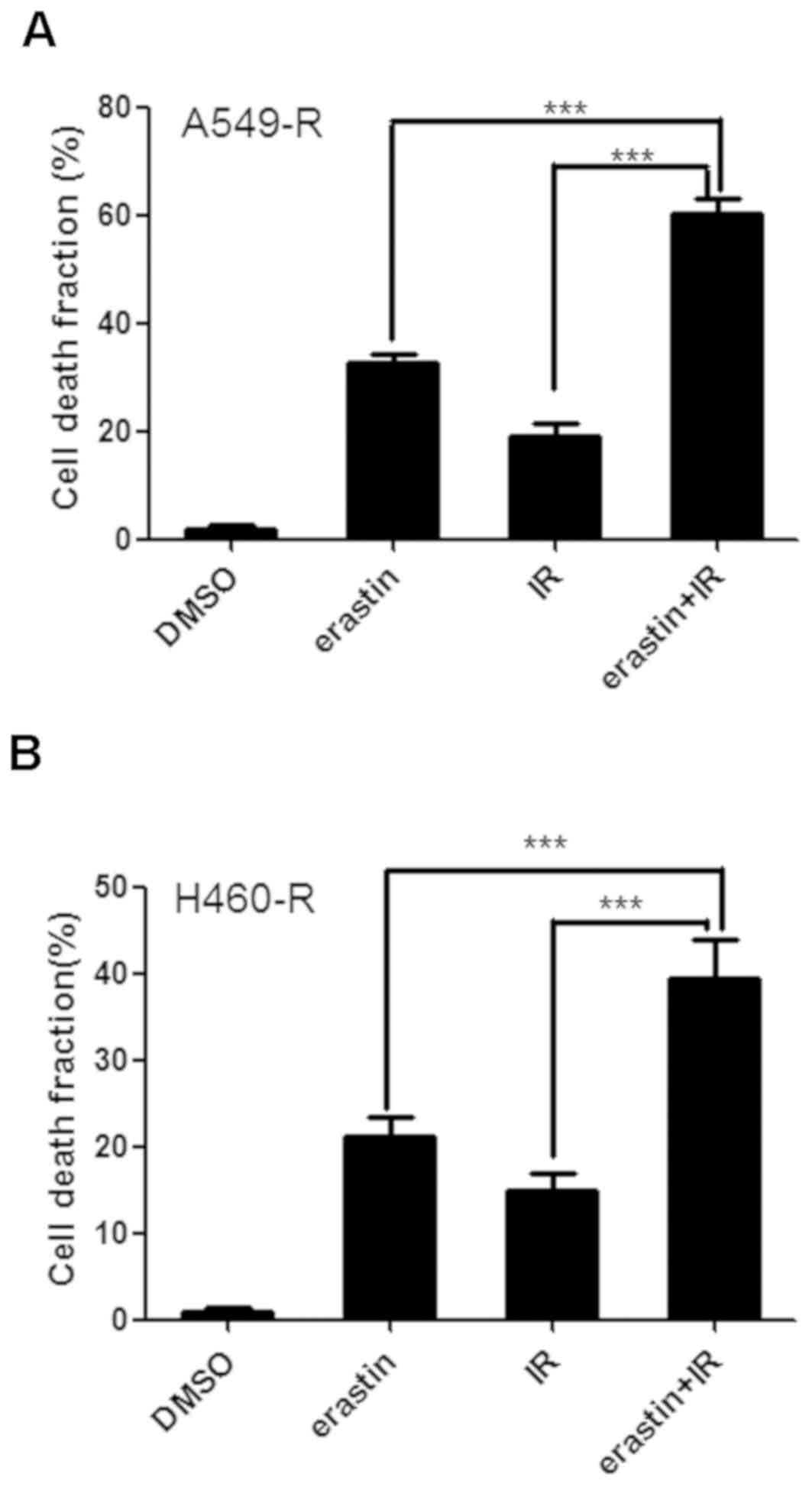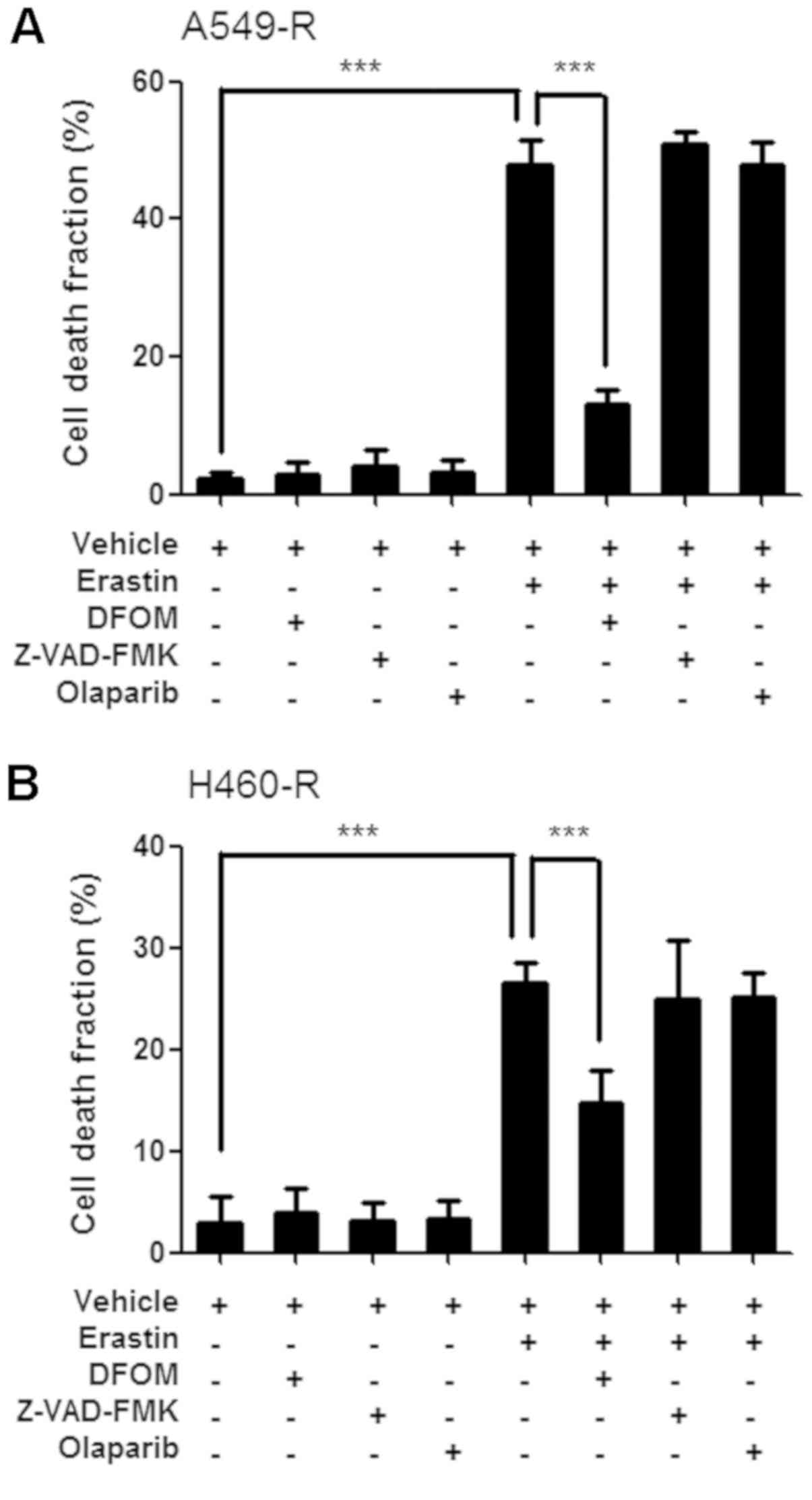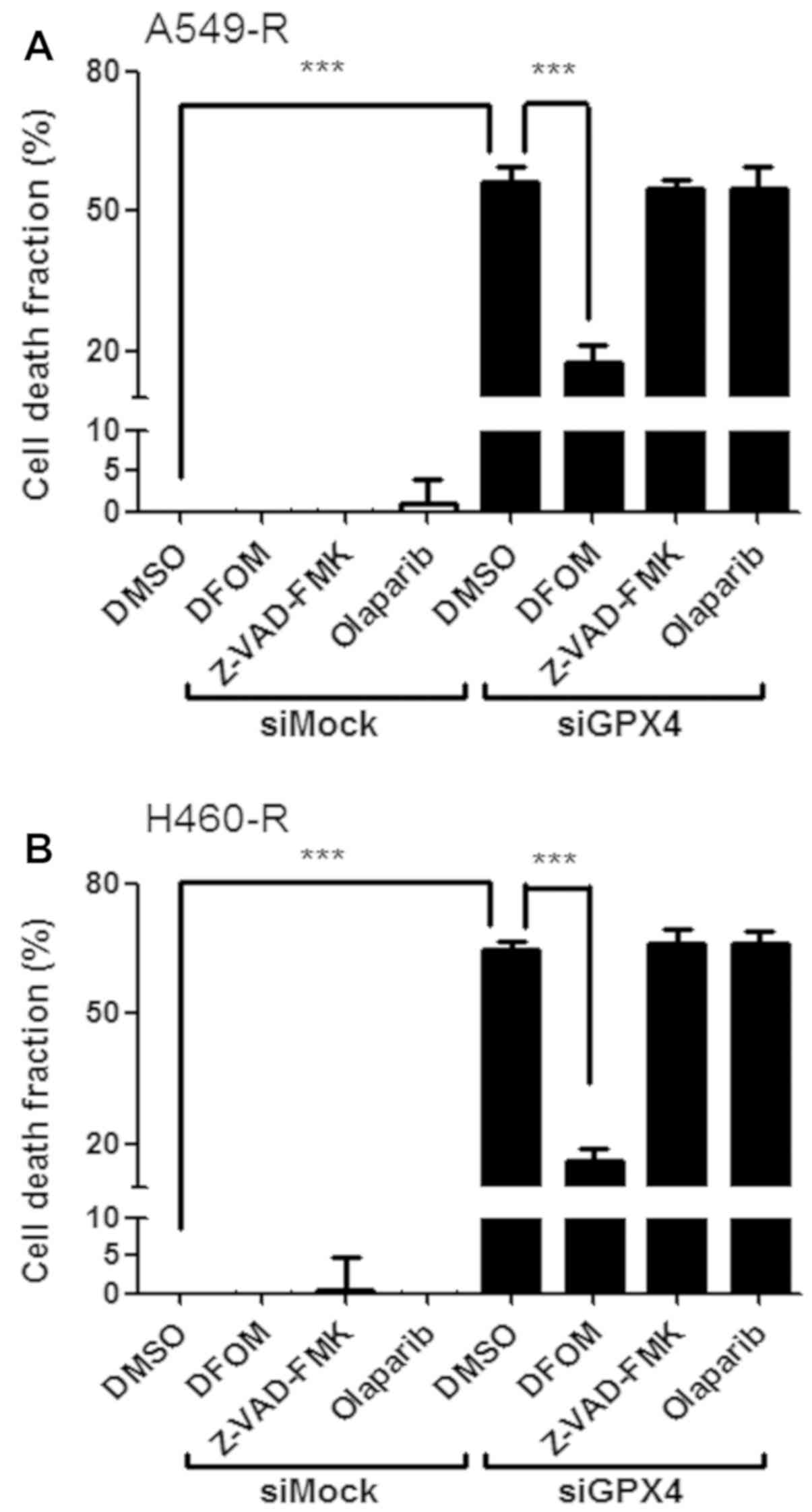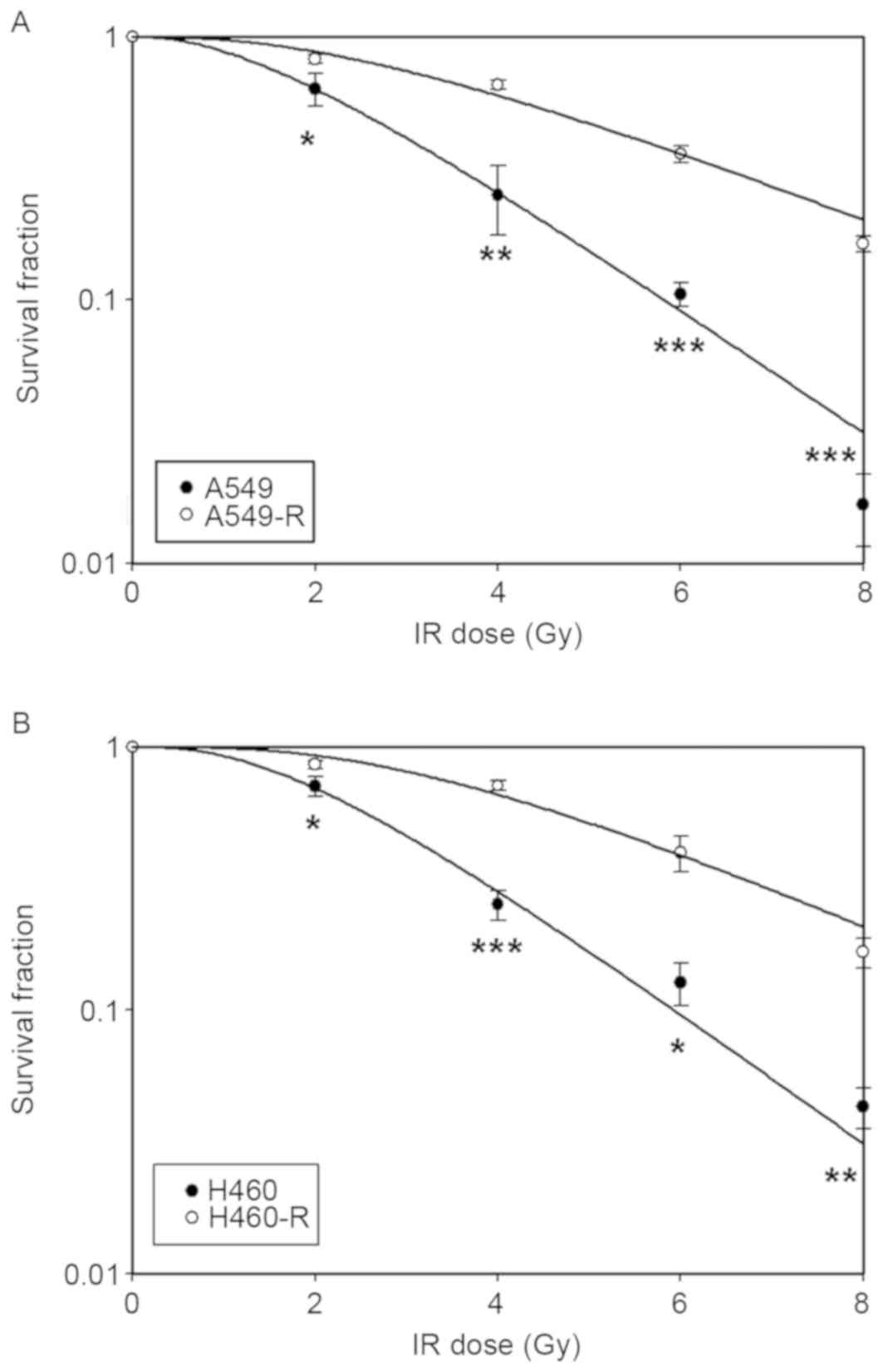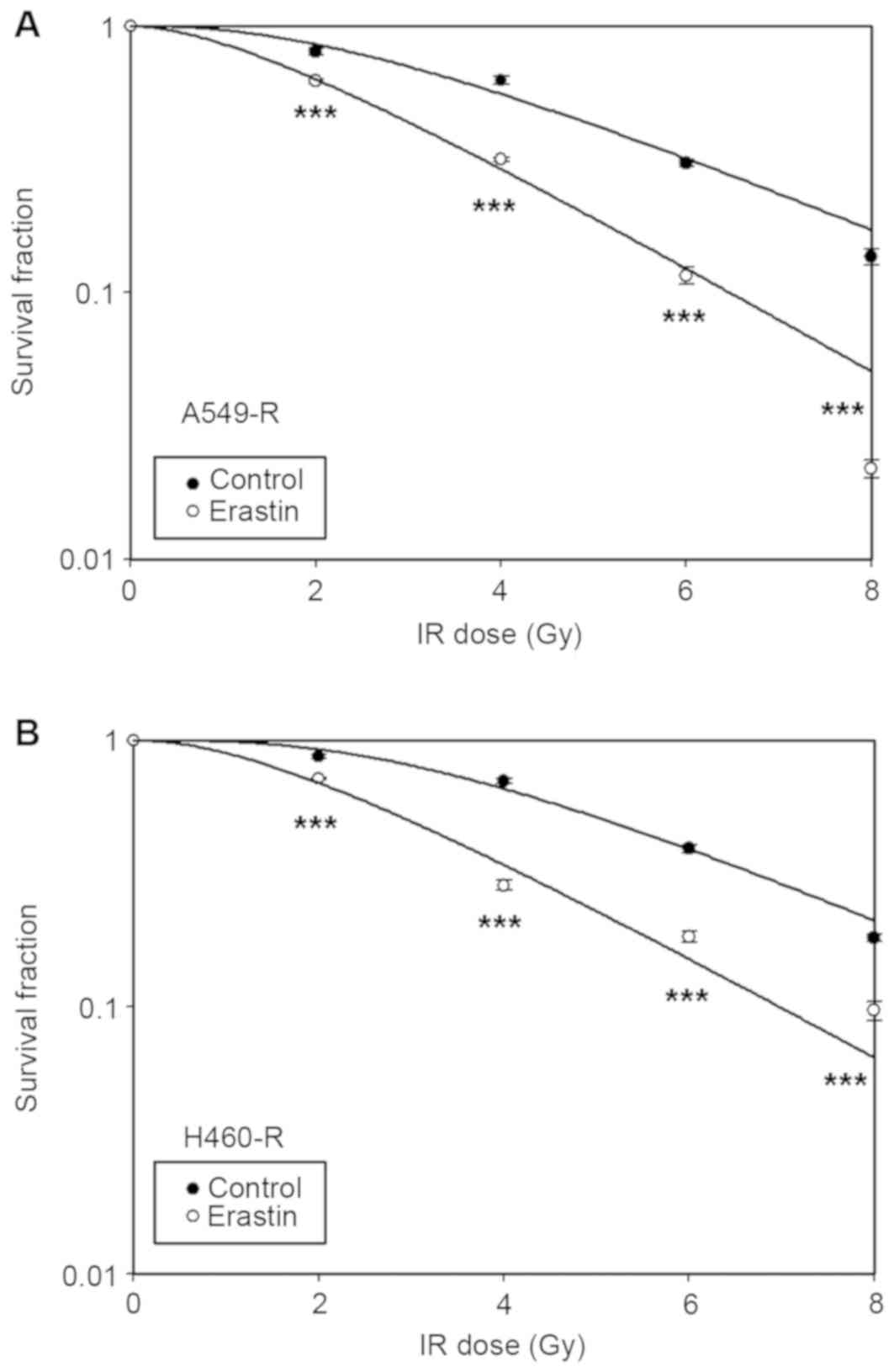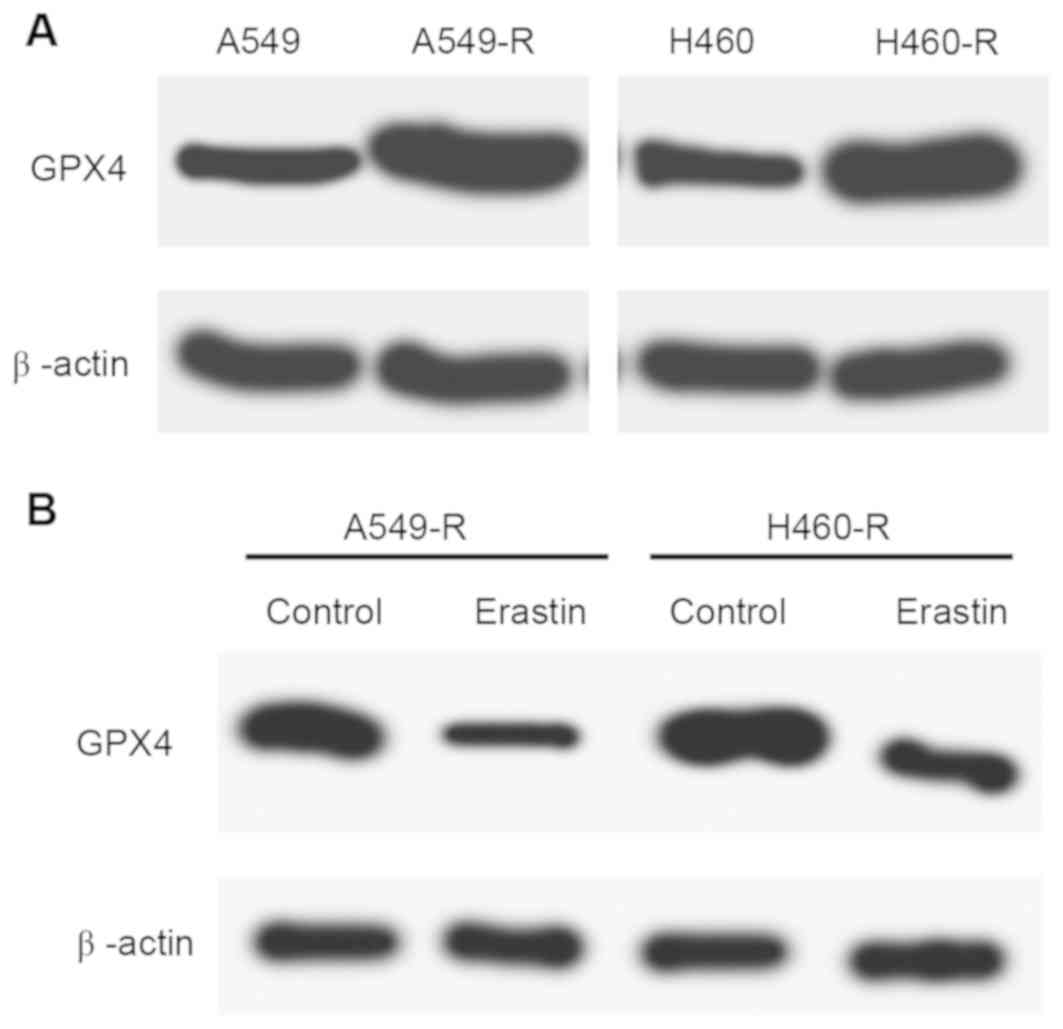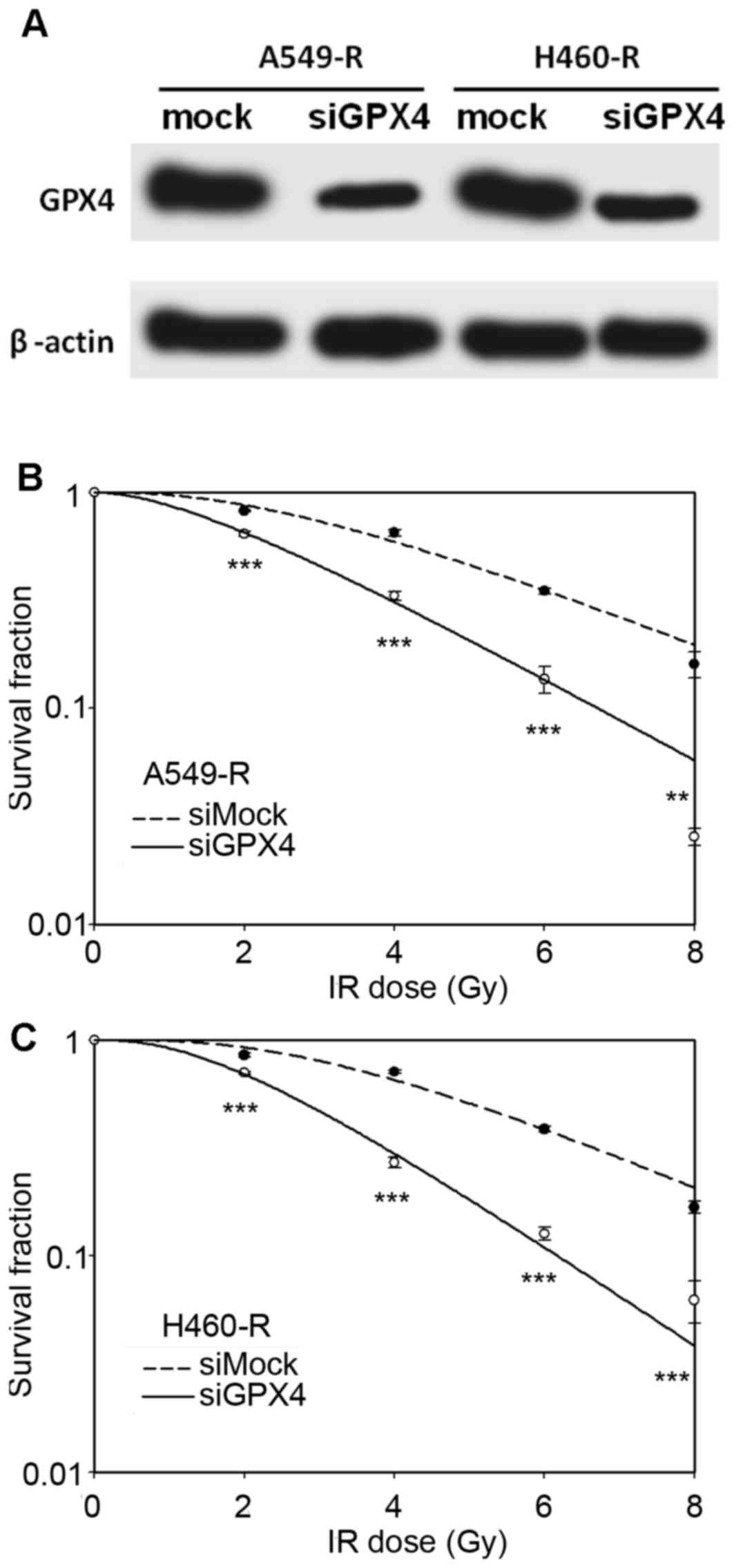|
1
|
Li K, Liu J, Tian M, Gao G, Qi X, Pan Y,
Ruan J, Liu C and Su X: CHMP4C disruption sensitizes the human lung
cancer cells to irradiation. Int J Mol Sci. 17(pii): E182015.
View Article : Google Scholar : PubMed/NCBI
|
|
2
|
Noone AM, Howlader N, Krapcho M, Miller D,
Brest A, Yu M, Ruhl J, Tatalovich Z, Mariotto A, Lewis DR, et al:
SEER cancer statistics review (CSR). 1975-2015, National Cancer
Institute; Bethesda, MD: https://seer.cancer.gov/csr/1975_2015/based on
November 2017 SEER data submission, posted to the SEER web site,
April 2018.
|
|
3
|
Radovic M, Kanesvaran R, Rittmeyer A, Früh
M, Minervini F, Glatzer M and Putora PM: Multidisciplinary
treatment of lung cancer in older patients: A review. J Geriatr
Oncol. Oct 3–2018.(Epub ahead of print). View Article : Google Scholar : PubMed/NCBI
|
|
4
|
Gower A, Wang Y and Giaccone G: Oncogenic
drivers, targeted therapies, and acquired resistance in
non-small-cell lung cancer. J Mol Med (Berl). 92:697–707. 2014.
View Article : Google Scholar : PubMed/NCBI
|
|
5
|
Nguyen KS, Neal JW and Wakelee H: Review
of the current targeted therapies for non-small-cell lung cancer.
World J Clin Oncol. 5:576–587. 2014. View Article : Google Scholar : PubMed/NCBI
|
|
6
|
Dolma S, Lessnick SL, Hahn WC and
Stockwell BR: Identification of genotype-selective antitumor agents
using synthetic lethal chemical screening in engineered human tumor
cells. Cancer Cell. 3:285–296. 2003. View Article : Google Scholar : PubMed/NCBI
|
|
7
|
Yagoda N, von Rechenberg M, Zaganjor E,
Bauer AJ, Yang WS, Fridman DJ, Wolpaw AJ, Smukste I, Peltier JM,
Boniface JJ, et al: RAS-RAF-MEK-dependent oxidative cell death
involving voltage-dependent anion channels. Nature. 447:864–868.
2007. View Article : Google Scholar : PubMed/NCBI
|
|
8
|
Yang WS and Stockwell BR: Synthetic lethal
screening identifies compounds activating iron-dependent,
nonapoptotic cell death in oncogenic-RAS-harboring cancer cells.
Chem Biol. 15:234–245. 2008. View Article : Google Scholar : PubMed/NCBI
|
|
9
|
Dixon SJ and Stockwell BR: The role of
iron and reactive oxygen species in cell death. Nat Chem Biol.
10:9–17. 2014. View Article : Google Scholar : PubMed/NCBI
|
|
10
|
Dixon SJ, Lemberg KM, Lamprecht MR, Skouta
R, Zaitsev EM, Gleason CE, Patel DN, Bauer AJ, Cantley AM, Yang WS,
et al: Ferroptosis: An iron-dependent form of nonapoptotic cell
death. Cell. 149:1060–1072. 2012. View Article : Google Scholar : PubMed/NCBI
|
|
11
|
Wolpaw AJ, Shimada K, Skouta R, Welsch ME,
Akavia UD, Pe'er D, Shaik F, Bulinski JC and Stockwell BR:
Modulatory profiling identifies mechanisms of small
molecule-induced cell death. Proc Natl Acad Sci USA. 108:E771–E780.
2011. View Article : Google Scholar : PubMed/NCBI
|
|
12
|
Yu Y, Xie Y, Cao L, Yang L, Yang M, Lotze
MT, Zeh HJ, Kang R and Tang D: The ferroptosis inducer erastin
enhances sensitivity of acute myeloid leukemia cells to
chemotherapeutic agents. Mol Cell Oncol. 2:e10545492015. View Article : Google Scholar : PubMed/NCBI
|
|
13
|
Sun X, Niu X, Chen R, He W, Chen D, Kang R
and Tang D: Metallothionein-1G facilitates sorafenib resistance
through inhibition of ferroptosis. Hepatology. 64:488–500. 2016.
View Article : Google Scholar : PubMed/NCBI
|
|
14
|
Ivanov SD, Semenov AL, Mikhelson VM,
Kovan'ko EG and Iamshanov VA: Effects of iron ion additional
introduction in radiation therapy of tumor-bearing animals. Radiats
Biol Radioecol. 53:296–303. 2013.PubMed/NCBI
|
|
15
|
Ivanov SD, Semenov AL, Kovan'ko EG and
Yamshanov VA: Effects of iron ions and iron chelation on the
efficiency of experimental radiotherapy of animals with gliomas.
Bull Exp Biol Med. 158:800–803. 2015. View Article : Google Scholar : PubMed/NCBI
|
|
16
|
El Osta BE, Behera M, Kim S, Berry LD,
Sica G, Pillai RN, Owonikoko TK, Kris MG, Johnson BE, Kwiatkowski
DJ, et al: Characteristics and outcomes of patients (pts) with
metastatic KRAS mutant lung adenocarcinomas: Lung Cancer Mutation
Consortium (LCMC) database. J Clin Oncol. 35 (15 Suppl):S90212017.
View Article : Google Scholar
|
|
17
|
Kwon MY, Park E, Lee SJ and Chung SW: Heme
oxygenase-1 accelerates erastin-induced ferroptotic cell death.
Oncotarget. 6:24393–24403. 2015. View Article : Google Scholar : PubMed/NCBI
|
|
18
|
Yu JA, Li H, Meng X, Fullerton DA,
Nemenoff RA, Mitchell JD and Weyant MJ: Group IIa secretory
phospholipase expression correlates with group IIa secretory
phospholipase inhibition-mediated cell death in K-ras mutant lung
cancer cells. J Thorac Cardiovasc Surg. 144:1479–1485. 2012.
View Article : Google Scholar : PubMed/NCBI
|
|
19
|
Vigil D, Cherfils J, Rossman KL and Der
CJ: Ras superfamily GEFs and GAPs: Validated and tractable targets
for cancer therapy? Nat Rev Cancer. 10:842–857. 2010. View Article : Google Scholar : PubMed/NCBI
|
|
20
|
Pearce AG, Segura TM, Rintala AC,
Rintala-Maki ND and Lee H: The generation and characterization of a
radiation-resistant model system to study radioresistance in human
breast cancer cells. Radiat Res. 156:739–750. 2001. View Article : Google Scholar : PubMed/NCBI
|
|
21
|
Peng G, Cao RB, Li YH, Zou ZW, Huang J and
Ding Q: Alterations of cell cycle control proteins SHP1/2, p16,
CDK4 and cyclin D1 in radioresistant nasopharyngeal carcinoma
cells. Mol Med Rep. 10:1709–1716. 2014. View Article : Google Scholar : PubMed/NCBI
|
|
22
|
Hall EJ and Giaccia AJ: Radiobiology for
the radiologist. Section I, Chapter 3. Cell survival curves. 7th.
Wolters Kluwer Health/ Lippincott Williams & Wilkins;
Philadelphia, PA, USA: pp. 2–51. 2012
|
|
23
|
Wu L, Liu YY, Li ZX, Zhao Q, Wang X, Yu Y,
Wang YY, Wang YQ and Luo F: Anti-tumor effects of penfluridol
through dysregulation of cholesterol homeostasis. Asian Pac J
Cancer Prev. 15:489–494. 2014. View Article : Google Scholar : PubMed/NCBI
|
|
24
|
Yang WS, SriRamaratnam R, Welsch ME,
Shimada K, Skouta R, Viswanathan VS, Cheah JH, Clemons PA, Shamji
AF, Clish CB, et al: Regulation of ferroptotic cancer cell death by
GPX4. Cell. 156:317–331. 2014. View Article : Google Scholar : PubMed/NCBI
|
|
25
|
Tor YS, Yazan LS, Foo JB, Wibowo A, Ismail
N, Cheah YK, Abdullah R, Ismail M, Ismail IS and Yeap SK: Induction
of apoptosis in MCF-7 cells via oxidative stress generation,
mitochondria-dependent and caspase-independent pathway by ethyl
acetate extract of dillenia suffruticosa and its chemical profile.
PLoS One. 10:e01274412015. View Article : Google Scholar : PubMed/NCBI
|
|
26
|
Yang KS, Kohler RH, Landon M, Giedt R and
Weissleder R: Single cell resolution in vivo imaging of DNA damage
following PARP inhibition. Sci Rep. 5:101292015. View Article : Google Scholar : PubMed/NCBI
|
|
27
|
Li Y, Pan K, Chen L, Ning JL, Li X, Yang
T, Terrando N, Gu J and Tao G: Deferoxamine regulates
neuroinflammation and iron homeostasis in a mouse model of
postoperative cognitive dysfunction. J Neuroinflammation.
13:2682016. View Article : Google Scholar : PubMed/NCBI
|
|
28
|
Fang S, Yu X, Ding H, Han J and Feng J:
Effects of intracellular iron overload on cell death and
identification of potent cell death inhibitors. Biochem Biophys Res
Commun. 503:297–3029. 2018. View Article : Google Scholar : PubMed/NCBI
|
|
29
|
Jiang L, Kon N, Li T, Wang SJ, Su T,
Hibshoosh H, Baer R and Gu W: Ferroptosis as a p53-mediated
activity during tumour suppression. Nature. 520:57–62. 2015.
View Article : Google Scholar : PubMed/NCBI
|
|
30
|
Louandre C, Marcq I, Bouhlal H, Lachaier
E, Godin C, Saidak Z, François C, Chatelain D, Debuysscher V,
Barbare JC, et al: The retinoblastoma (Rb) protein regulates
ferroptosis induced by sorafenib in human hepatocellular carcinoma
cells. Cancer Lett. 356:971–977. 2015. View Article : Google Scholar : PubMed/NCBI
|
|
31
|
Lachaier E, Louandre C, Godin C, Saidak Z,
Baert M, Diouf M, Chauffert B and Galmiche A: Sorafenib induces
ferroptosis in human cancer cell lines originating from different
solid tumors. Anticancer Res. 34:6417–6422. 2014.PubMed/NCBI
|
|
32
|
Conrad M and Friedmann Angeli JP:
Glutathione peroxidase 4 (Gpx4) and ferroptosis: What's so special
about it? Mol Cell Oncol. 2:e9950472015. View Article : Google Scholar : PubMed/NCBI
|
|
33
|
Seiler A, Schneider M, Förster H, Roth S,
Wirth EK, Culmsee C, Plesnila N, Kremmer E, Rådmark O, Wurst W, et
al: Glutathione peroxidase 4 senses and translates oxidative stress
into 12/15-lipoxygenase dependent- and AIF-mediated cell death.
Cell Metab. 8:237–248. 2008. View Article : Google Scholar : PubMed/NCBI
|
|
34
|
Kagan VE, Tyurin VA, Jiang J, Tyurina YY,
Ritov VB, Amoscato AA, Osipov AN, Belikova NA, Kapralov AA, Kini V,
et al: Cytochrome c acts as a cardiolipin oxygenase required for
release of proapoptotic factors. Nat Chem Biol. 1:223–232. 2005.
View Article : Google Scholar : PubMed/NCBI
|















